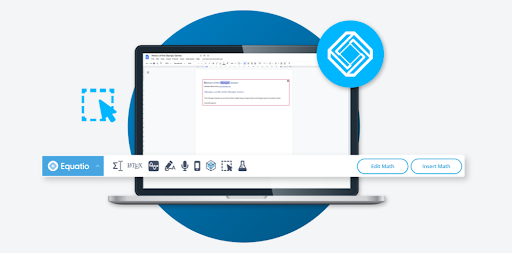
Recognized as a “gatekeeper” discipline, mathematics has a reputation for being exclusionary and challenging. How can we break down barriers to allow more inclusive and accessible learning opportunities for all students in mathematics?
Beginning as early as third grade, students need opportunities to plan, communicate, and reflect about math in order to build a deeper understanding. From our research on learner variability, we know that strategies such as providing multiple writing surfaces, visual aids, and text-to-speech can make math more accessible by supporting students across a whole child framework of factors.
Yet, mathematics remains an area with significant need for digital tools that can facilitate broader access to enriching learning experiences and mathematics content. Historically, math has been a paper-based discipline, with assistive technology provided only to those who needed it most (e.g. students with dyscalculia and dysgraphia).
During the pandemic, math went online, and teachers more than ever realized the widespread benefits to creating digital math […] digital math tools developed on the foundations of personalized learning and Universal Design for Learning have given students choice and have allowed them to play to their strengths.
-Martin McKay, founder and CEO of Texthelp
SOURCE

Universal Design for Learning guidelines emphasize the importance of providing multiple means of representation, engagement, and action & expression
UDL emphasizes the importance of multiple means of engagement, representation, and expression. In practice, this means providing multiple ways for students to find relevance in their learning, presenting information in different modalities, and offering multiple ways for students to demonstrate their understanding. Recognizing that math is naturally multimodal (i.e., uses language, symbols, and multiple representations) highlights the promise of UDL in creating digital tools that make math more accessible . By providing different ways of accessing and communicating content, digital tools informed by UDL can support inclusivity and better outcomes for students. The key takeaway: What is critical for some, is good for all.

Universal Design for Learning guidelines address the “Why,” “What,” and “How” of learning by engaging different networks of the brain.
One product leading the way in math accessibility is Equatio, a digital tool developed by Texthelp that brings together UDL and mathematics learning. The creators of Equatio are curious about barriers educators face in creating accessible math learning opportunities, and they are working to design supportive strategies needed for educators to overcome those barriers.
Math can feel as unfamiliar as an unfamiliar language. We’re working to solve these challenges so students and teachers become the real winners.
-Ben Johnston, Head of Global Marketing at TextHelp
To better understand how and why digital tools can support students and teachers, Digital Promise created a research partnership with Equatio, mathematics educators, and researchers from University of California, Irvine. This Research-Practice-Industry Partnership (RPIP) will address the need for accessibility tools and the importance of UDL in mathematics. RPIPs bring together experts in these different contexts so practitioners can drive innovation and improve student outcomes, developers can make better products, and researchers can create more relevant knowledge for the field.
Co-design with teachers ensures innovation is driven by their needs and perspectives. In this project, math educators are both content and context experts. They know mathematics, their students, and their students’ needs. They have firsthand experience with the challenges of bringing more students into mathematics and integrating digital tools into practice. Educators’ expertise is crucial for making products like Equatio even better, so more students can participate to their full abilities.
With Equatio, learners gain increased access to mathematics through multimodal features, such as hearing math read aloud, visualizing graphs with a Desmos graphing integration, and using Mathspace to experiment with shapes and spaces. Learners can use handwriting recognition, speech inputs, and a comprehensive library of equations and formulas.

Students can use the tools in Equatio to visualize, digitize, and understand math, in ways that best suit their needs.
With many different ways to access and express mathematics, Equatio has the potential to support inclusive learning experiences for all students, especially those for whom traditional approaches are a barrier to engagement.
Additionally, Equatio has the potential to support teachers by saving them time and effort needed to create and share math-related content. For example, Equatio’s new Forms Creator leverages AI to streamline the process of creating math assessments and enables teachers to create a wide range of questions that cater to all abilities in minutes. That means additional time that teachers can spend planning individualized instruction, offering mastery oriented feedback, or having a conference with a student—practices we know are incredibly impactful yet underutilized due to time constraints.
Through this important work that brings together research, practice, and technology, we will co-design solutions that build a more inclusive, equitable future of mathematics learning.
If you are a math educator who uses Equatio and wants to contribute to The Future of Math Inclusion study, consider joining our team as a Research Partner!
Nine Equatio users will be selected to join this research community of educators, researchers, and Equatio developers to share their expertise and learn together. Participants can be compensated up to $750 for participation in lesson and artifact analysis and interviews, a time commitment of approximately 10 hours between January and March 2024. For more information, review our Call for Teacher Partners and indicate your interest by completing this form.